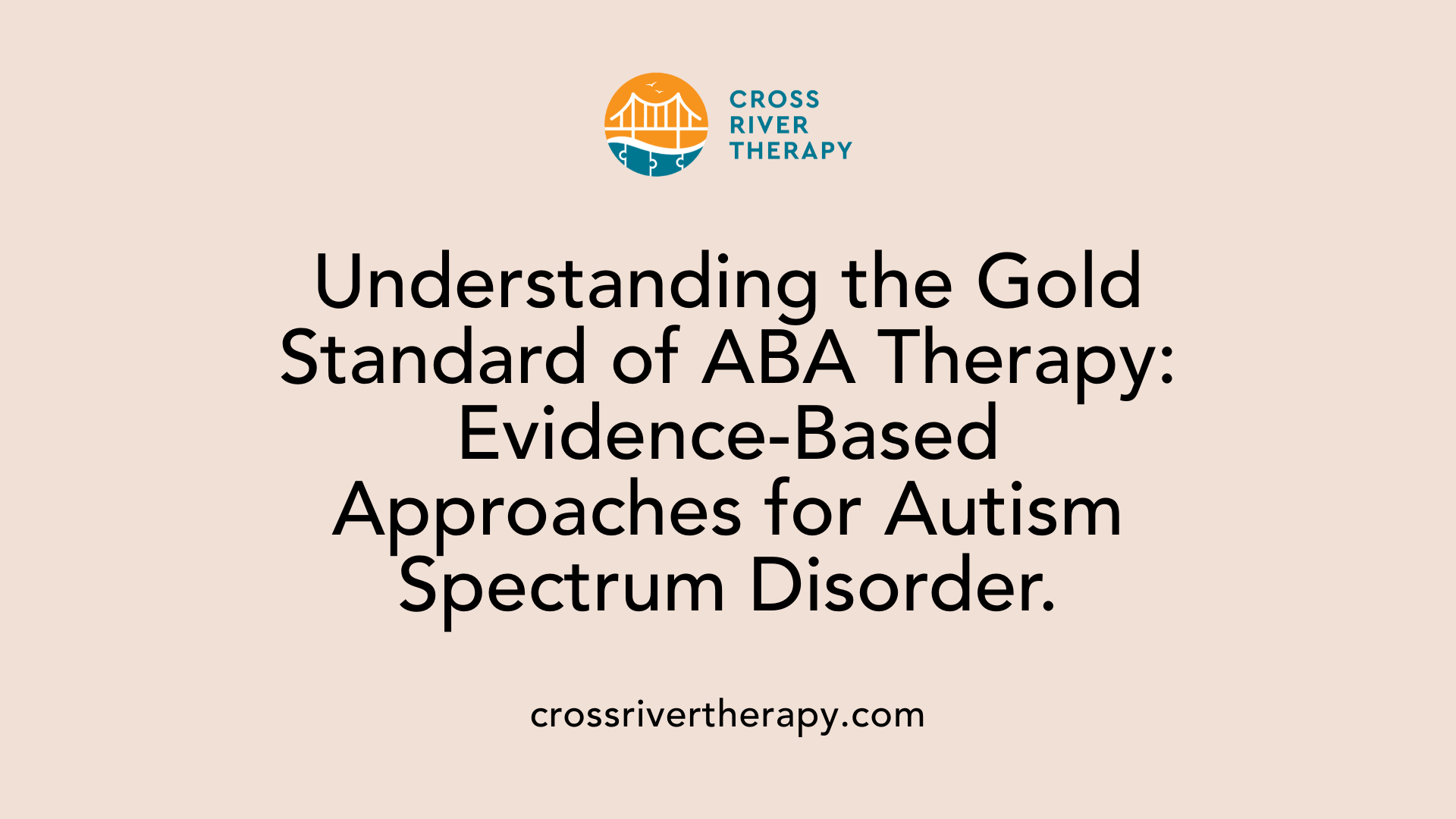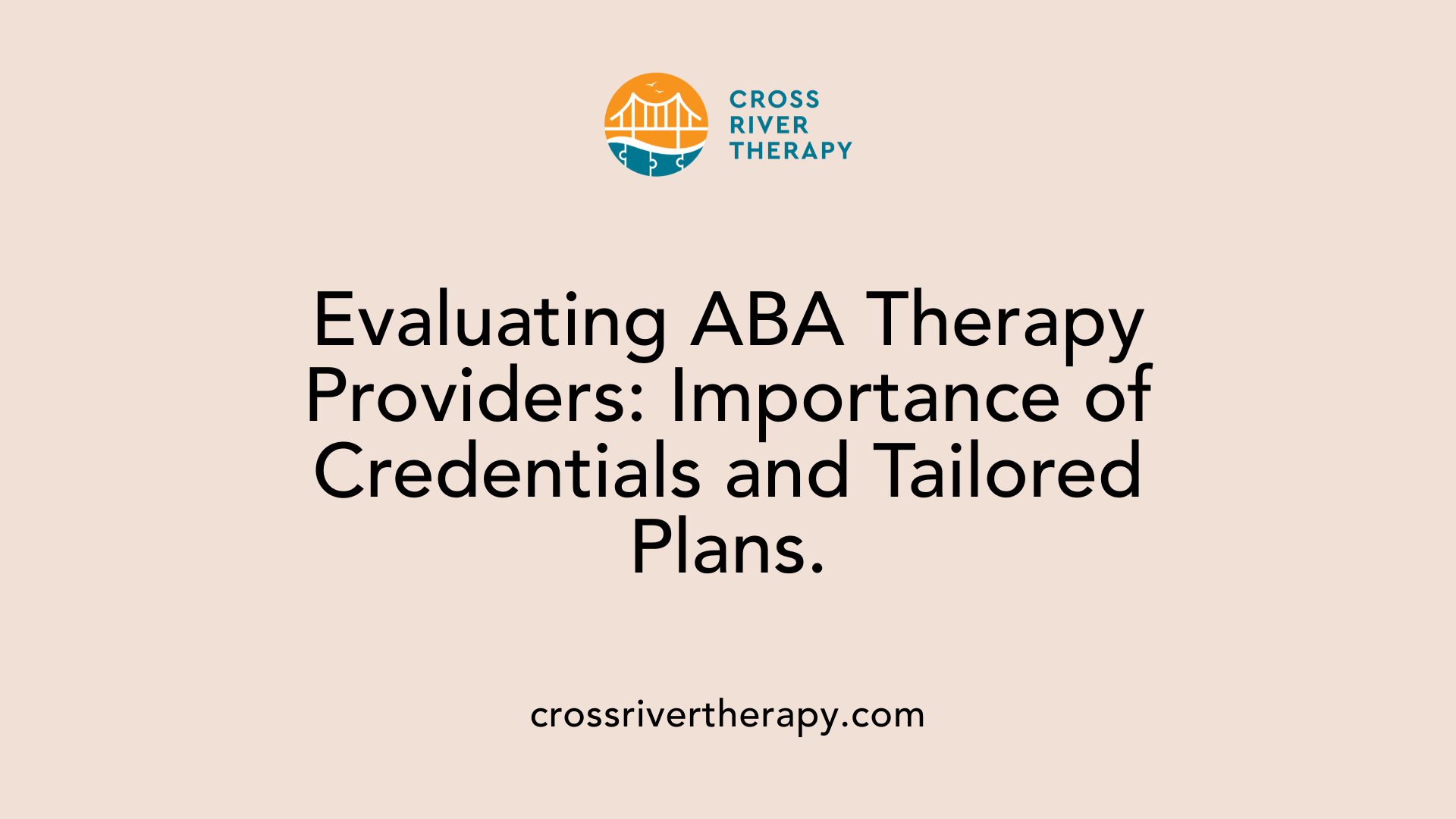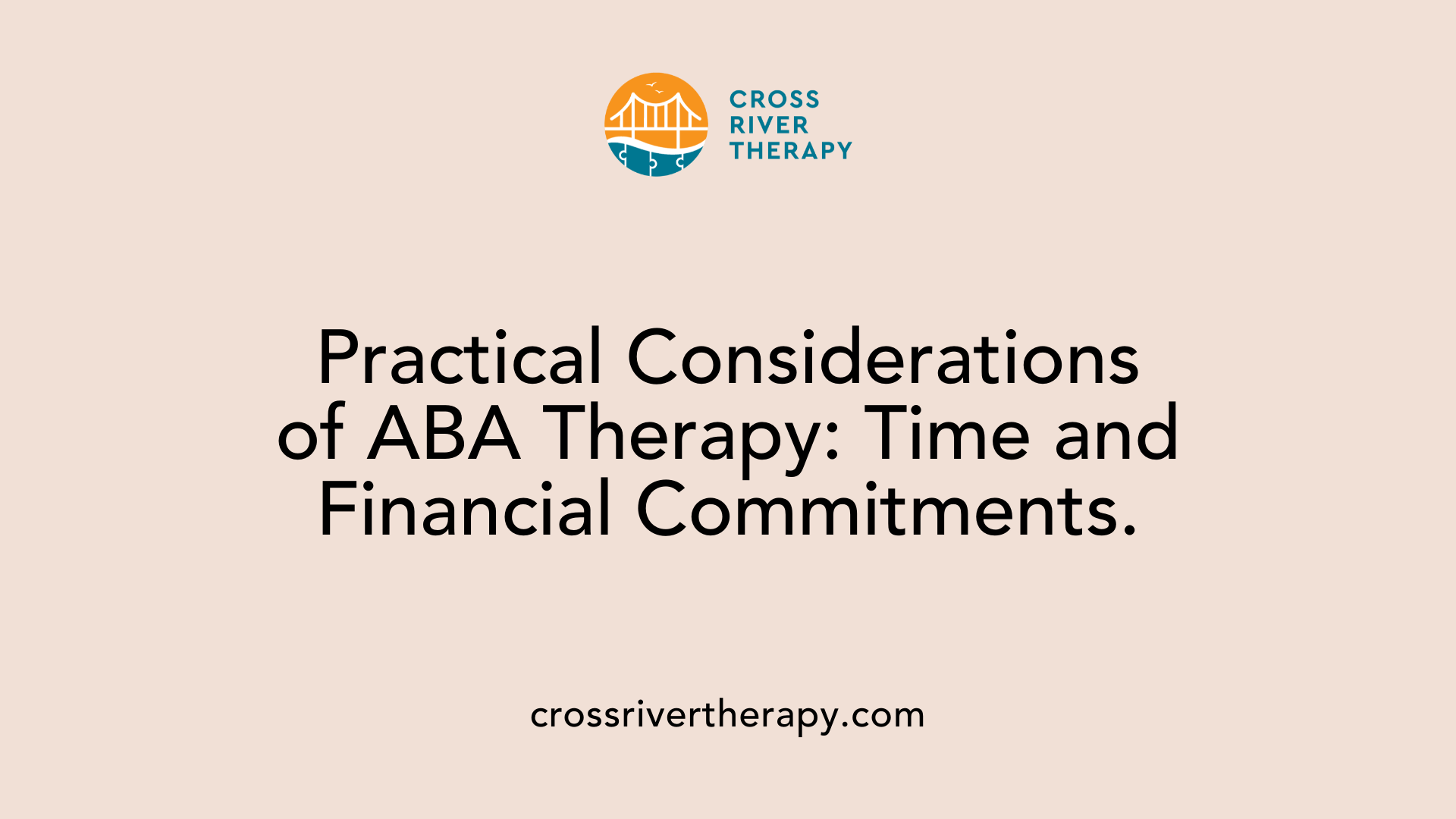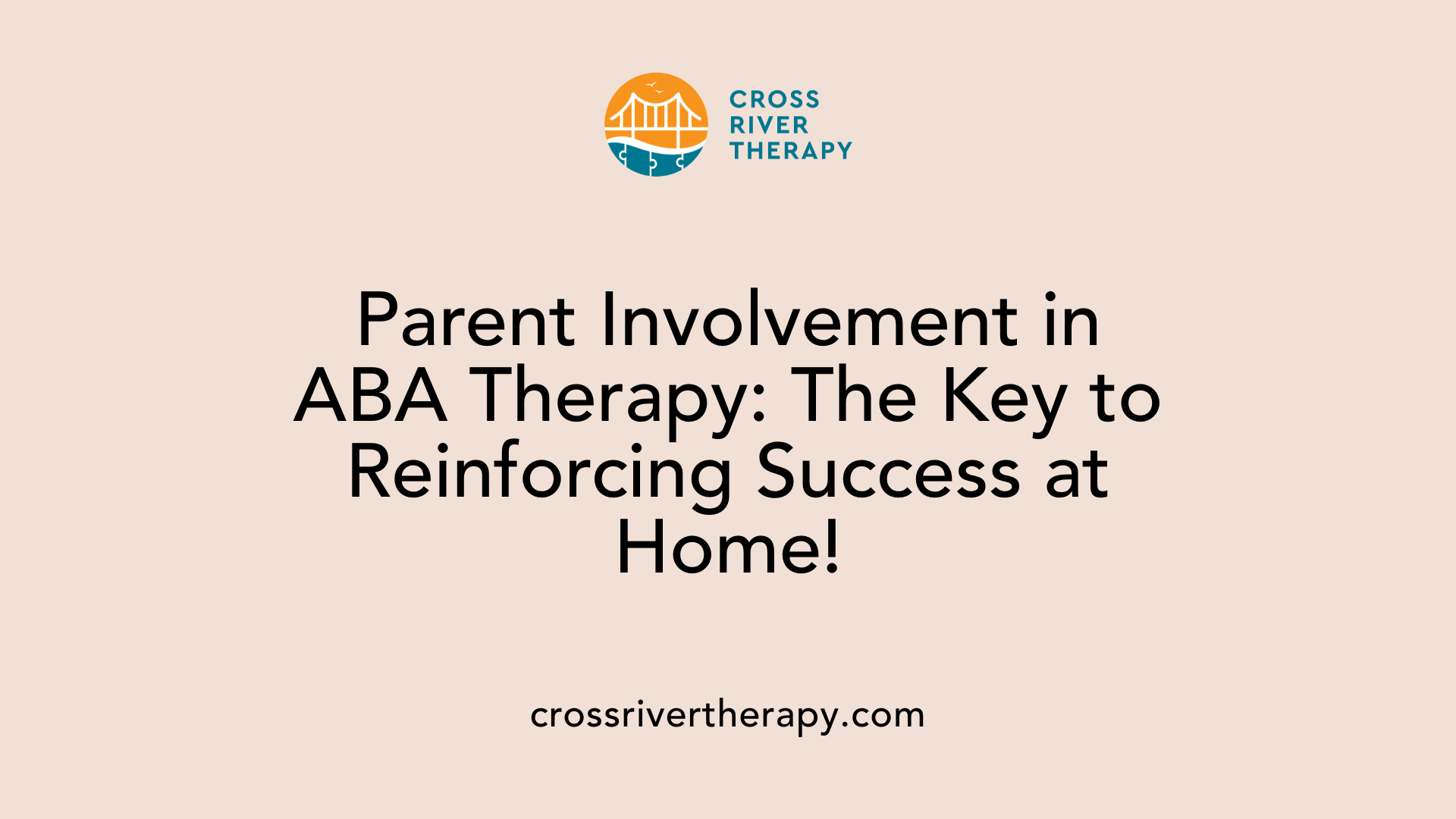How to Choose the Best ABA Therapy Setting for Your Child
Choosing the Right ABA Therapy Environment for Your Child with ASD
Understanding ABA Therapy
Applied Behavior Analysis (ABA) therapy is a highly esteemed treatment for children with Autism Spectrum Disorder (ASD), known for its evidence-based methodologies that significantly improve communication, social skills, and adaptive behaviors. However, selecting the best ABA therapy setting requires careful consideration of various factors, from provider qualifications to setting appropriateness. This guide will help you navigate these choices to ensure that your child receives the most effective therapeutic support.
Understanding the Gold Standard of ABA Therapy

What is the gold standard of ABA therapy?
The gold standard of Applied Behavior Analysis (ABA) therapy for Autism Spectrum Disorder (ASD) lies in its strong evidence-based approach. This methodology harnesses behavioral principles to foster significant gains in behavior and adaptive skills among children. Numerous studies highlight that a substantial percentage—ranging from 63% to 88%—of children receiving ABA show notable improvements across cognitive, language, social, and adaptive domains.
However, these positive outcomes come with challenges. High rates of service discontinuation and financial barriers often obstruct the full completion of ABA programs. Even so, research indicates that even reduced amounts of therapy can still yield worthwhile benefits, particularly for children with the most significant challenges.
To further enhance the effectiveness and accessibility of ABA therapy, ongoing advocacy and policy reforms are necessary. Continued comparative research can help in understanding how to maximize positive results for all children in need of these interventions, ensuring that every child with ASD has the opportunity to thrive.
Benefits and challenges of ABA therapy
ABA therapy offers a myriad of benefits:
- Individualized Focus: Each program is customized to meet the unique needs of the child.
- Structured Approach: Emphasizes measurable goals that track progress over time.
- Parent Involvement: Family training and collaboration reinforce learning at home.
Despite its advantages, challenges include:
- Cost Barriers: Intensive therapy schedules (10-40 hours weekly) can be financially taxing.
- Discontinuation Rates: Many families encounter obstacles that lead to premature termination of therapy.
As the field evolves, it is crucial to remain committed to enhancing the delivery of ABA therapy, ensuring alignment with the latest research and best practices, while addressing accessibility concerns for families.
Exploring ABA Therapy Settings
What are the various settings for ABA therapy?
ABA therapy can be implemented in a variety of environments, which enhances its effectiveness by providing tailored support. Common settings include:
| Setting | Description | Benefits |
|---|---|---|
| Home | Therapy takes place in the child’s home, tackling everyday routines and settings. | Comfort of familiar surroundings aids in consistent reinforcement. |
| School | Collaboration with educators, utilizing classroom dynamics for social skills. | Supports integration into school life and compliance with educational goals. |
| Clinics | Structured environments focusing on intensive, one-on-one therapy. | Controlled environment for focused learning and assessment. |
| Community | Engaging with social scenarios in real-world settings like parks or shops. | Practical application of skills in community contexts. |
Beyond these traditional settings, ABA techniques are widely utilized in athletics to enhance performance through positive reinforcement.
Why apply ABA in natural environments?
Implementing ABA in natural environments brings numerous advantages. It allows for the integration of learned skills into daily activities, reinforcing behavior changes in contexts the child experiences regularly. This integration helps foster:
- Communication Skills: By practicing in familiar settings, children learn to express their needs more effectively.
- Social Interaction: Engaging in community activities develops social skills, ensuring better emotional expression and social connections.
- Task Mastery: Techniques like Task Analysis break down complex skills into manageable steps, facilitating mastery over daily living activities.
By focusing on real-life applications of learned behaviors, ABA therapy aims to improve the overall quality of life for individuals with Autism Spectrum Disorder.
Determining ABA Therapy Suitability
How can I determine if ABA therapy is right for my child?
Determining the appropriateness of ABA therapy for your child involves observing specific signs and behaviors. Understanding these indicators can guide you in making an informed decision.
Signs your child might benefit from ABA therapy include:
- Difficulty with communication: Struggles in expressing needs or understanding others can be a strong indicator.
- Challenges with social skills: If your child has trouble making friends or engaging in play, ABA could support these skills.
- Repetitive behaviors or routines: Frequent engagement in the same activities or patterns can suggest the need for intervention.
- Difficulty with self-regulation: This includes issues with managing emotions, which ABA strategies might help address.
- Delayed developmental milestones: If your child is lagging in reaching typical developmental stages, a tailored approach may be beneficial.
- Difficulty with transitions: Struggles with changes in routine can warrant strategies offered in ABA therapy.
- Behavioral challenges: Significant problematic behaviors can necessitate the structured support that ABA therapy provides.
Factors influencing the decision to use ABA therapy
When considering ABA therapy, several factors can influence your decision:
- Nature of the behavioral challenges: The intensity and frequency of behaviors can determine if ABA is necessary.
- Individualized needs: Each child with Autism Spectrum Disorder (ASD) is unique, requiring tailored assessments and personalized goals.
- Recommendations from professionals: Input from educators and specialists can guide effective decisions on therapy options.
- Setting of services: ABA can be administered in home, school, or community settings, allowing flexibility based on your child’s needs and strengths.
Understanding these considerations will help you ascertain if ABA therapy is the right choice for supporting your child’s development.
Assessing ABA Program Success

What Are the Main Components That Make an ABA Program Successful?
For an ABA program to be successful, it must adhere to several crucial components. The cornerstone of an effective ABA therapy program is its alignment with the seven dimensions of Applied Behavior Analysis:
| Dimension | Description | Importance |
|---|---|---|
| Applied | Targets socially significant behaviors that impact the learner’s daily life. | Ensures that changes made in therapy have real-world relevance. |
| Behavioral | Focuses exclusively on observable and measurable behaviors. | Allows for clear tracking of progress and data-driven decision-making. |
| Analytic | Uses data to analyze behavioral changes, verifying whether interventions are effective. | Reduces subjective decision-making, allowing practitioners to adjust strategies based on evidence. |
| Technological | Implements procedures that are well-defined and reproducible. | Ensures therapy can be consistently applied across various settings and by different therapists. |
| Conceptually Systematic | Integrates theories of learning into the practice of ABA. | Facilitates a coherent understanding and application of the techniques used in therapy. |
| Effective | Confirms that interventions produce meaningful change in behavior. | Measures the success of therapy in improving the child’s skills and reducing problematic behaviors. |
| Generality | Ensures learned behaviors can be maintained over time and transferred across different contexts. | Guarantees that benefits of therapy persist beyond treatment and are applicable in various environments. |
Incorporating these dimensions creates a structured and effective approach to ABA therapy. They not only guide the planning and implementation of therapy but also ensure that the methods used are rooted in scientific principles, facilitating a pathway to success for each unique learner.
Evaluating ABA Therapy Providers

Importance of provider credentials
When considering ABA therapy for a child with Autism Spectrum Disorder, the qualifications of the therapy provider are paramount. Parents should look specifically for therapists with certifications such as Board Certified Behavior Analysts (BCBAs). These professionals have undergone rigorous training, passing a certification exam, and completing necessary coursework to deeply understand behavior analysis. This expertise is essential to ensure that therapy is conducted at high standards, following the latest ethical and empirical practices.
Additionally, it's crucial to assess the compliance of the provider with state licensure and regulations. This compliance guarantees a structured and safe therapeutic environment that adheres to accepted norms in the field.
Significance of individualized treatment plans
Each child with ASD is unique, necessitating tailored approaches in ABA therapy. An effective therapy provider will create customized treatment plans based on comprehensive assessments of a child's individual needs, strengths, and challenges. A one-size-fits-all approach is insufficient; instead, therapy goals should be specific, measurable, achievable, relevant, and time-bound. This customization facilitates tracking progress and ensuring the treatment effectively addresses specific behavioral issues.
Moreover, parents should look for providers who demonstrate a commitment to ongoing communication and collaboration, reinforcing therapy goals both at home and in other settings. This active involvement helps to create a supportive learning environment that extends beyond the therapy sessions.
Practical Considerations of ABA Therapy

Time Commitment Required for ABA Therapy
ABA therapy demands a significant time commitment, typically ranging between 20 to 40 hours per week. This intensive schedule is designed to ensure substantial progress, allowing therapists to closely monitor behaviors and adjust treatment plans as needed.
Parents should prepare for this involvement as it requires dedication and organization. A planned schedule that incorporates these therapy hours within the family’s routine can enhance the effectiveness of the ABA approach. Additionally, it is essential to recognize that consistency plays a pivotal role in the success of therapy, making it vital for parents to reinforce learned strategies at home.
Insurance and Financial Considerations
Insurance coverage for ABA therapy has expanded due to stipulations from the Affordable Care Act. However, coverage can vary significantly among providers and policies. Parents should thoroughly check their individual insurance plans to understand the extent of their benefits, including any copayments or limits on the number of therapy hours.
It’s advisable for families to discuss financial obligations with potential ABA providers before starting treatment. This proactive step helps prevent unexpected costs and finds workable solutions to ensure that therapy remains accessible and manageable within their financial means.
Ultimately, being informed about both time commitments and financial aspects can empower parents to make decisions that best support their child's ABA therapy.
| Consideration | Details | Recommendations |
|---|---|---|
| Time Commitment | 20-40 hours per week | Plan schedule to integrate therapy into routine |
| Insurance Coverage | Varies by plan, check benefits | Discuss financial obligations with providers |
Parent Involvement in ABA Therapy

Role of parents in ABA therapy
Parent involvement is vital in the success of ABA therapy. Parents and caregivers are encouraged to participate actively, which enhances the effectiveness of the treatment.
By engaging in training and collaborative efforts with therapists, parents reinforce goals set during therapy sessions. This active participation helps to create a cohesive learning environment where therapy strategies are consistently applied at home, leading to more effective outcomes. Regular communication and updates from therapists enable parents to better understand their child’s progress and the techniques used in therapy.
Ensuring consistency at home
Consistency is key in ABA therapy. Maintaining the same strategies and reinforcement at home as those used during therapy sessions helps children generalize skills across different environments. Parents should work closely with their providers to ensure that they are using appropriate methods and techniques.
This approach includes monitoring behaviors and reinforcing positive actions through praise or rewards, similar to what is done during therapy. By creating an environment that mirrors the structured approach of ABA therapy, parents play a crucial role in their child’s development and success.
Choosing Between ABA and Traditional School Settings
Factors influencing the choice between ABA and school
When deciding between ABA therapy and traditional school settings for a child with Autism Spectrum Disorder (ASD), several factors should be carefully evaluated. One significant consideration is the severity and type of behavioral challenges the child displays. For example, children exhibiting significant problematic behaviors may benefit more from the structured and intensive approach of ABA therapy.
Conversely, children with less disruptive behaviors might thrive in a conventional classroom setup with appropriate support, such as an aide or modified curricula. Flexibility is essential, as each child's unique needs shape the most suitable environment for learning.
Potential integration with school programs
Another critical aspect is the potential for integration between ABA therapy and school. For children undergoing full-time ABA therapy, planning smooth transitions to traditional schooling should be a priority. Regular discussions about this transition are vital to gradually reduce therapy hours and introduce the child to socially appropriate settings, ensuring consistency in support across both environments.
ABA programs can also collaborate with schools by equipping educators with insights and strategies that benefit the child, promoting a cohesive approach to learning. By aligning ABA strategies with school supports, the child can navigate educational environments more effectively.
Best Practices for Selecting ABA Providers and Settings
Effective strategies in choosing ABA providers
Selecting an appropriate ABA therapy provider is crucial for your child's success. Here are some strategies to guide your choice:
- Check Qualifications: Ensure your provider has qualified professionals, such as Board Certified Behavior Analysts (BCBAs), who have the necessary degrees and certification.
- Assess Experience: Look for therapists with experience specifically in treating children with Autism Spectrum Disorder (ASD) and those who can manage your child's unique behavioral challenges.
- Individualized Treatment Plans: Confirm that the provider develops personalized treatment plans tailored to your child's strengths and weaknesses, avoiding a one-size-fits-all approach.
- Evaluate Rapport: Schedule initial meetings to assess the therapist’s rapport with your child, ensuring a comfortable and engaging environment for effective learning.
Ensuring cultural competency and continuity of care
Cultural competency and continuity of care are vital in ABA therapy. Here’s how to ensure these aspects:
- Adaptation to Family Values: Choose a provider that respects and incorporates your family's cultural background and values into their therapy practices, promoting inclusivity.
- Consistency in Team: Select providers that emphasize continuity by maintaining a consistent team of therapists, allowing for stable relationships and familiarity that enhances the therapy experience.
- Regular Communication: Look for providers who prioritize ongoing communication with parents, offering updates and opportunities for feedback and collaboration to reinforce therapy goals at home.
By thoroughly evaluating these aspects, you can make an informed decision that best supports your child's therapeutic needs.
Making Informed Decisions for Your Child’s Development
Choosing an appropriate ABA therapy setting for your child can be a complex decision, but by understanding the essentials—from evaluating provider credentials to considering the therapy settings—you can make informed choices that support your child's growth. Remember, consistency and collaboration with your chosen ABA provider and ongoing involvement in the therapy process will significantly contribute to your child’s progress and success. Stay informed, ask questions, and seek support when needed to ensure that your child benefits from the highest standards of ABA therapy available.
References
- Ultimate Guide To Choosing The Right ABA Therapy For Your Child
- Applied Behavior Analysis (ABA) | Autism Speaks
- Child Development - Choosing Between ABA therapy and School
- Choosing the Right ABA Therapy Provider: A Parent's Guide
- Essential Things Parents Should Know Before Starting ABA Therapy
- The Ultimate Guide to Selecting the Right ABA Therapy Provider for ...
- How to Choose the Best ABA Provider for Your Child
- What are the 7 Dimensions of Applied Behavior Analysis (ABA)
- Applied Behavior Analysis Examples in Action - Regis College Online



